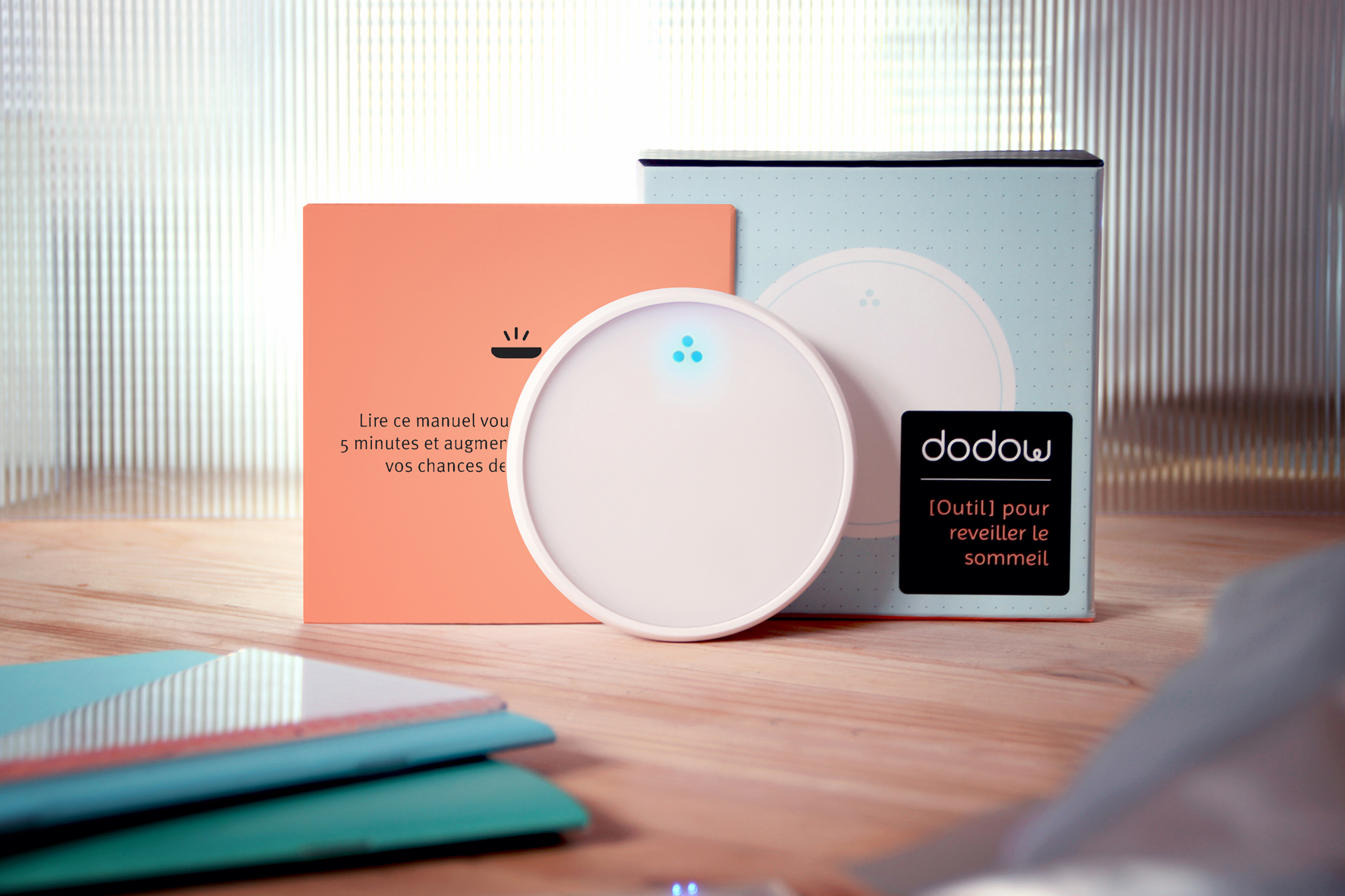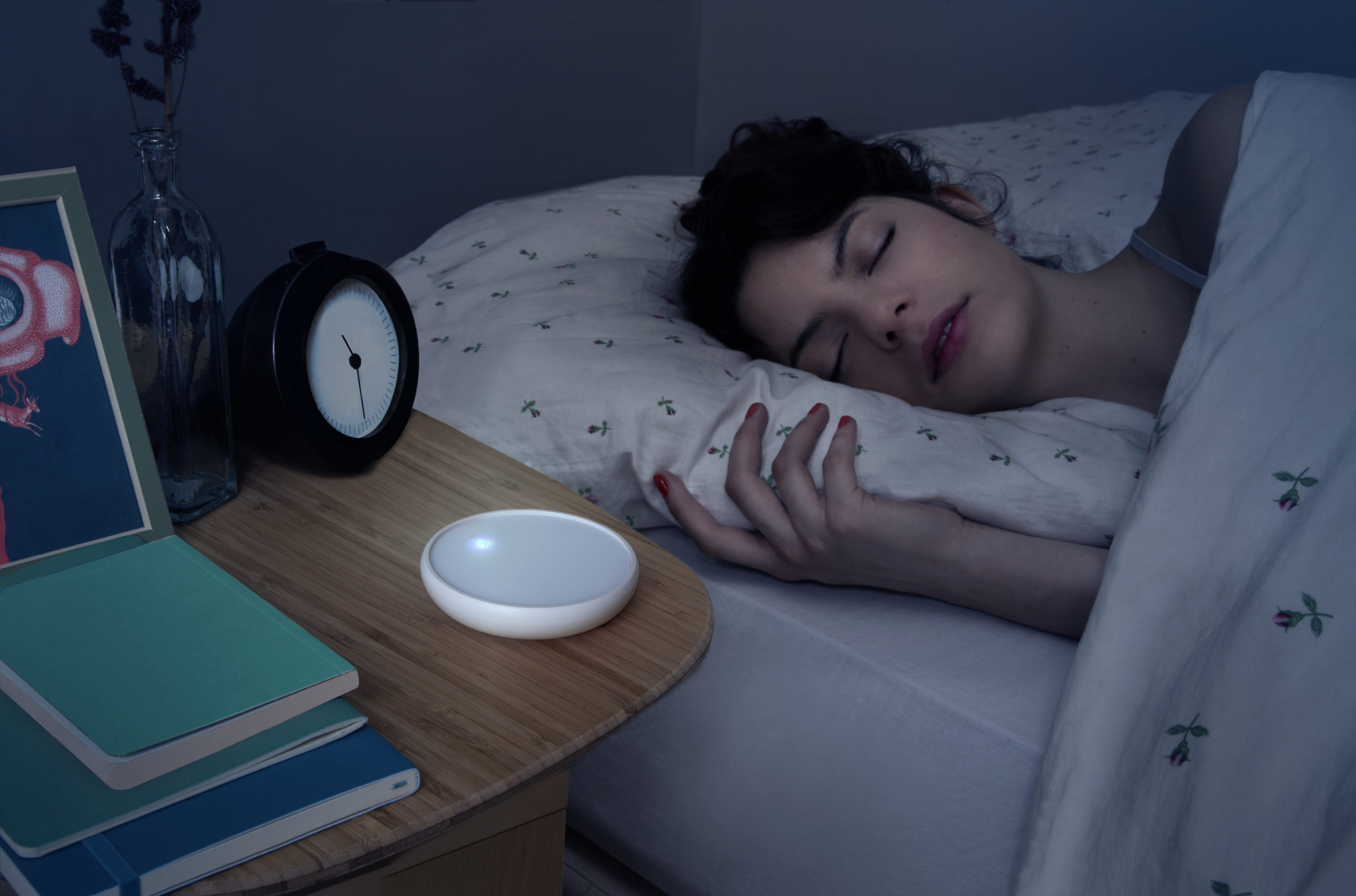In the modern age, it seems that we rely on devices for everything. We have wristbands to keep an eye on our fitness, heating we can turn on from our phones and apps that help us track our sleep.
We’ve heard over and over again how the increase in technology could actually be robbing us of sleep. But what if the technology were developed which could combat restlessness and insomnia?
The Dodow may be able to do just that. It is a small household gadget - developed by insomniacs, for insomniacs. It uses the principles of controlled breathing and light pulses to soothe the user to sleep.
Before using the Dodow
Prior to unboxing the Dodow, I was a classic worrier. The main things that kept me awake were a racing mind and trying to plan tasks for the day, week or even year! I struggled to ‘switch off’ most nights and any attempts to clear my mind or count sheep were short-lived.
People with insomnia are usually tormented by their lack of sleep, and I could certainly feel the difference following a restless night. Difficulty concentrating, heavy eyelids and a reliance on coffee were characteristic of these days and I definitely felt less than one hundred percent.
In a survey performed by the UK’s Mental Health Foundation, 36% of those surveyed were classified as having chronic insomnia. If that weren’t bad enough, 75% of those people experienced symptoms such as poor concentration and were 4 times as likely to have relationship difficulties.
Poor sleep is certainly no joke, and the engineers at Dodow think they may have found a solution. For the sake of my sleep and caffeine intake, I decided to give them a try!

First impressions of the Dodow
When my Dodow arrived, I was surprised at how sleek and space-age it appeared. I have to confess, I wondered how this palm-sized white disc could be expected to help me with my sleep.
According to their site, the Dodow already boasts over 150,000 users and many report very positive experiences with using the device. In fact, two of the Dodow’s founders, Pierre-Luc Deniel and Alexandre Dujoncquoy, suffer from long-term insomnia themselves which gave me significant peace of mind.
How the Dodow works
The Dodow works by projecting a pattern of pulsating blue light onto your ceiling, which you match your breathing to. It is touch-activated and with only two settings, is extremely easy to use.
The light sequences can last either eight minutes, or twenty depending on how long you think you need to get drowsy. It uses the principles of meditation and controlled breathing to help your body enter a rest state. Unlike meditation however, having the external light to focus on and guide your breathing means there is less opportunity for your mind to wander.
I was certainly eager to try a sleep aid which did not come in the form of a pill or some kind of miracle tea from an Instagram ad. The Dodow offers an approach which is harmless and not reliant on chemicals.

My experience
Normally being a side-sleeper, I was a little dubious as I set up the Dodow for my first night’s trial. You are required to lie on your back to begin with, which is not my favourite way to sleep.
However, once the blue light was projected onto my ceiling, I felt soothed. I actually enjoyed the deep breathing that the Dodow encourages. It was sometimes hard to keep exactly to the rhythm of the light, but I found that concentrating on doing so successfully emptied my mind of all the day’s thoughts.
About halfway through the eight-minute cycle, I found keeping my eyes open to be a real challenge. This is part of the Dodow’s ingenuity. Rather than aiming to get to sleep, which we know can be frustrating and most times fruitless, your aim is to make it through the entire cycle.
Almost like reverse psychology, the more I tried to keep my eyes open, the more they seemed determined to close.
To be frank, I can’t recall how many times I made it to the end of the cycle. The Dodow turns off automatically after eight minutes and almost 90% of the time, I was asleep before the cycle could complete.
Benefits of the Dodow
In my first month using the Dodow I noticed the following things:
- It took me significantly less time to fall asleep.
- Once asleep, I experienced fewer incidences of night-waking or restlessness.
- I was in a calmer mood before bedtime, without any of the anxiety I used to feel about falling asleep.
- My productivity at work was much improved, as well as my mood throughout the day.
- I no longer had such a high reliance on coffee to get through the day.
Final thoughts
Personally, I found the Dodow very helpful. I found that the quality of my sleep improved and it took me a significantly shorter time to drop off.
Sleep is a highly personal thing, so it would probably be optimistic to say the Dodow is a one-size-fits-all solution. If you struggle with a racing mind before sleep, the Dodow may well be worth a try. It certainly helped me, in any case!
For more sleep tips, why not check out some of our other blog posts? Whether it's dealing with the effects of stress on your sleep or to better understand your insomnia, we are here to help!


















